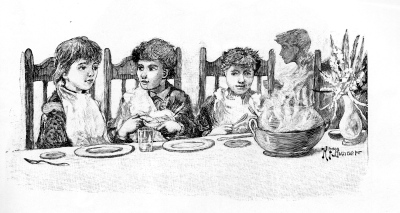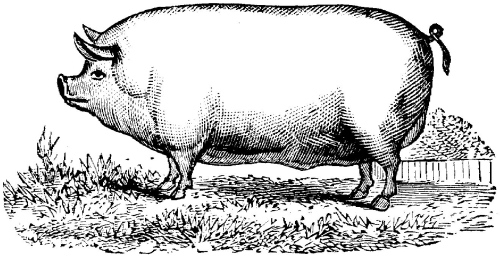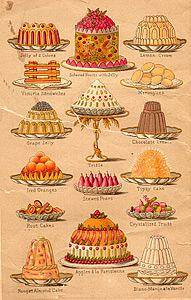A 1960s culinary childhood in the northeast of England
Dinner and pudding, tea, cakes and pies
1. Nomenclature.
I was born in 1958 in the northeast of England and raised in a warm and loving family comprising myself, mother, father and three siblings; I was the second eldest. We probably would have been categorised as lower middle class, had such social distinctions entered my consciousness. They did not, and I mention it here to put into context my recollections.
In those days, as most likely still today, the terminology of mealtimes varied from family to family, across regions of Britain and across British social classes. To cause further confusion, often the same word was used by some of these different groups to refer to a meal served at another time of the day. In my family the main meal of the day was dinner and it was served at lunchtime, rather than in the evening. We referred to the lighter evening meal (served up around 6:00 pm) as tea. Supper was served immediately before bedtime and more popular with the younger family members. This usually comprised a glass of milk or sometimes a bowl of cereal. Incidentally, no matter how light or heavy the food, my family always referred to dessert, whatever time of the day it might have been served, as pudding.
My mother was an excellent cook who provided us with hearty meals throughout the year using home grown vegetables or fresh produce purchased from neighbours’ allotments where possible and when available. At other times the well-stocked biweekly town market in Stockton-on-Tees provided all our fruit and vegetable needs. The meat came from the local butchers and so did the eggs, suet, curds and pease pudding.
2. Dinner and puddings: The weekly round.
The biggest dinner of the week always was served on Sunday. It was often roast chicken or a roast joint (usually beef or pork) accompanied with three fresh vegetables and mashed or new potatoes. Pork was served with apple sauce and sage and onion stuffing. Nearly every Sunday dinner included Yorkshire pudding. My mother’s Yorkshire puddings were the best I have tasted and looked magnificent. They were a deep golden brown, tall, light, hollow and crispy. Her secrets included mixing the batter with more water than milk and preparing it well in advance with enough time to settle and chill. Immediately before pouring into cake tins, my mother whisked up the batter up  for a second time. Meanwhile, the tins had been placed into a very hot oven to allow the beef dripping to get good and hot. The chilled batter was quickly spooned into the hot tins and returned to the oven as speedily at possible. Woe betide anyone who opened the oven before they were ready. The puddings smelled and tasted delicious. In fact we children loved them so much my mother was obliged to serve them separately prior to the main course. Rather strangely we were allowed to have them with milk and sugar. I can only assume this was because we had observed my paternal grandfather indulging in this seemingly unusual practice. [Editor’s note: Probably an insightful assumption. This was a traditional eighteenth and early nineteenth century of service and sweetening for many savoury puddings, and probably survived much longer, particularly in the north, as the distance from London lengthened.] My parents were more conventional, preferring gravy as the accompaniment. It was beautifully rich and packed with flavour from the meat juices, onion stock (with finely chopped onions) flour and ‘gravy salt’ for colour as well as seasoning.
for a second time. Meanwhile, the tins had been placed into a very hot oven to allow the beef dripping to get good and hot. The chilled batter was quickly spooned into the hot tins and returned to the oven as speedily at possible. Woe betide anyone who opened the oven before they were ready. The puddings smelled and tasted delicious. In fact we children loved them so much my mother was obliged to serve them separately prior to the main course. Rather strangely we were allowed to have them with milk and sugar. I can only assume this was because we had observed my paternal grandfather indulging in this seemingly unusual practice. [Editor’s note: Probably an insightful assumption. This was a traditional eighteenth and early nineteenth century of service and sweetening for many savoury puddings, and probably survived much longer, particularly in the north, as the distance from London lengthened.] My parents were more conventional, preferring gravy as the accompaniment. It was beautifully rich and packed with flavour from the meat juices, onion stock (with finely chopped onions) flour and ‘gravy salt’ for colour as well as seasoning.
Mother always prepared enough meat on Sunday to create leftovers for Monday. In winter the leftover beef was often made into hot pot--bite sized chunks of roasted beef layered with sliced vegetables and thinly sliced potatoes and leftover gravy. The oven transformed the top layer of sliced potato into a fantastically crispy golden brown topping. By contrast, in the summer the beef was thinly sliced and served with homegrown creamy Jersey potatoes and a salad of chopped lettuce and homegrown tomatoes, sprinkled with sugar.
On Tuesday we regularly had liver (my mother preferred pig’s, because of the texture), sometimes served with  pork sausages. Everything was browned in the pan with finely sliced onions, then cooked in watered milk, which created the most scrumptiously tasty and textured gravy.
pork sausages. Everything was browned in the pan with finely sliced onions, then cooked in watered milk, which created the most scrumptiously tasty and textured gravy.
Frequently on Wednesdays we were presented with homemade burgers or fried bacon, egg and black pudding (the latter being my father’s favourite). This was accompanied with homemade French fries immersed in hot melted lard twice to make them crispy on the outside and soft in the middle.
Thursdays were usually steak and kidney pie, raw materials once again supplied by the local butcher. The seasoned meat was bathed in a rich gravy and covered with wonderful short crust pastry propped up in the middle of the Pyrex™ dish with an upturned egg cup. Another Thursday favourite was minced beef and suet dumplings, as was corned beef and onion pie served with sliced Spanish onions in malt vinegar. Boiled ham and Pease pudding was another of my dad’s top ten.
Most Friday dinners were of fish. The fish was sourced from the local wet fish shop. It was usually cod but sometimes smoked haddock poached in milk, or rolled herring fillets oven-baked in a dish of diluted malt vinegar. Mother also fried herrings; two fillets were placed flesh side together, covered in oats and fried until crispy on the outside.
On Saturday, particularly on cold days, we had meaty vegetable soup made from mutton flap, carrots, turnip, parsnip and potato, in fact any available vegetable in season. The combined flavours were just delicious and improved the longer the soup simmered on the stove.
 My mother was a great pudding provider. Except for Sunday lunch, when we were simply too stuffed, pudding followed every dinner (we were young, growing and very active...). Mother had a great repertoire; one favourite was suet pudding bursting with bramble and apple picked fresh from the garden. The glazed ceramic bowl was lined with suet dough, capped with a doughy disk, covered with a pudding cloth and then steamed for several hours. Other puddings included jam roly-poly, treacle sponge (made with Lyle’s Golden Syrup) and fruit crumble, all served with custard made from Bird’s instant powder, of course.
My mother was a great pudding provider. Except for Sunday lunch, when we were simply too stuffed, pudding followed every dinner (we were young, growing and very active...). Mother had a great repertoire; one favourite was suet pudding bursting with bramble and apple picked fresh from the garden. The glazed ceramic bowl was lined with suet dough, capped with a doughy disk, covered with a pudding cloth and then steamed for several hours. Other puddings included jam roly-poly, treacle sponge (made with Lyle’s Golden Syrup) and fruit crumble, all served with custard made from Bird’s instant powder, of course.

